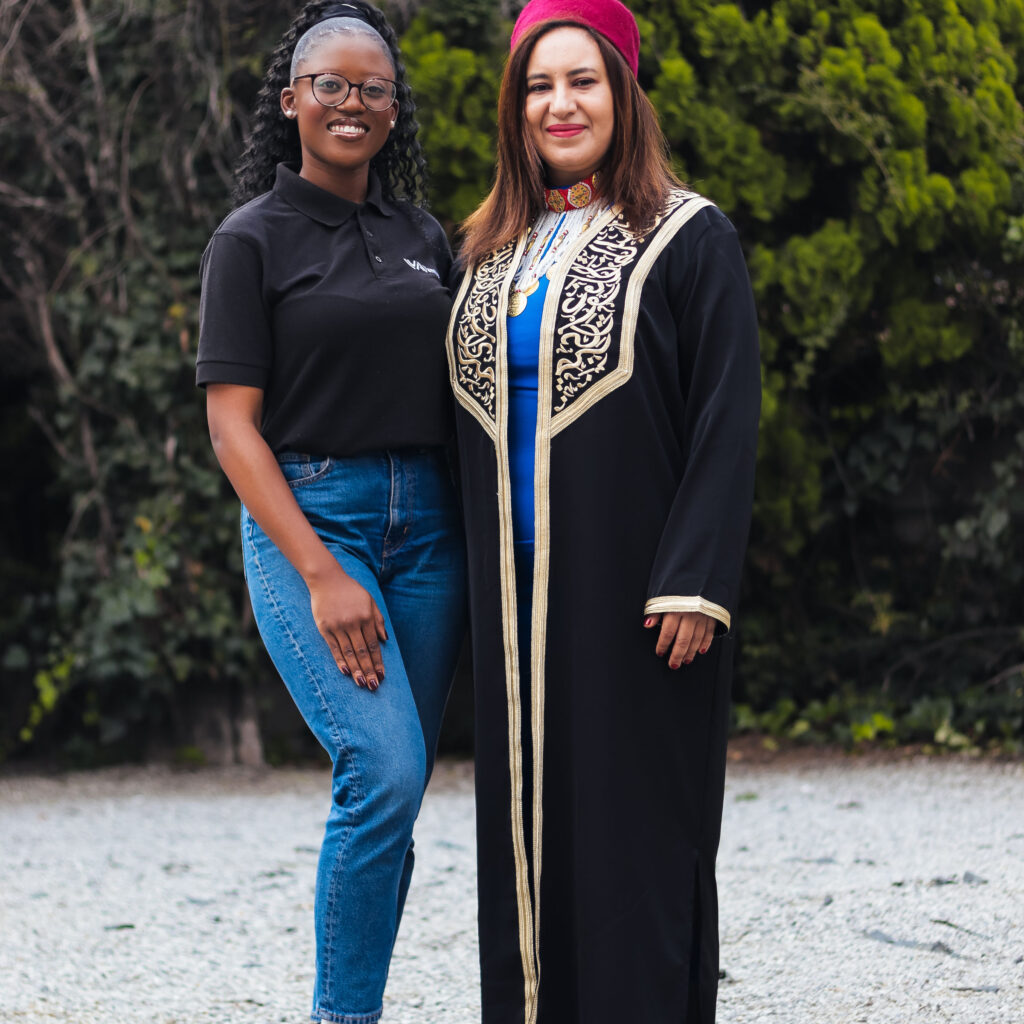As Africa advances toward a $180 billion digital economy by 2025, the participation of women in technology emerges as a critical determinant of the continent’s prosperity. Through comparative analysis of Tunisia and South Africa—two of Africa’s most progressive nations in gender policy and digital development—this article examines the complex dynamics of women’s participation in technology, revealing both remarkable progress and persistent structural barriers that continue to limit Africa’s full digital potential.
Introduction: Africa’s Digital Gender Paradox
Across Africa, a striking paradox defines women’s relationship with technology: exceptional educational achievement coupled with limited professional representation. This contradiction is particularly evident in Tunisia and South Africa, two countries that represent different models of African development yet share similar challenges in translating women’s educational success into technological leadership.
Tunisia, North Africa’s digital pioneer, and South Africa, the continent’s most industrialized economy, offer valuable case studies in understanding how progressive legal frameworks and ambitious digital strategies interact with deeply rooted cultural and structural barriers. Their experiences provide crucial insights for the broader African continent as it navigates its digital transformation.
Tunisia: Pioneering Digital Access, Confronting Gender Gaps
Historical Digital Leadership
Tunisia’s digital journey began with remarkable foresight. In 1991, Tunisia became the first Arab and African nation connected to the Internet, establishing an IP link with France’s INRIA via the SOTETEL-IT institute. This early adoption, preceded by a BITNET/EARN node installation in 1989, positioned Tunisia as a regional digital leader.
The creation of the Tunisian Internet Agency (ATI) in 1996 marked a turning point, expanding access beyond academic institutions to government entities, media outlets, and citizens. By 2000, Tunisia had introduced innovative initiatives including the e-Dinar for online payments, cyberparks, fiber-optic infrastructure, and the “Family PC” program providing financial assistance for computer purchases. Rural digital inclusion efforts, including the “Internet Bus” mobile literacy project, demonstrated early commitment to widespread access.
Legal Foundations for Gender Equality
Tunisia’s approach to women’s rights has been groundbreaking since independence. The Code of Personal Status (CSP), introduced in 1956 under President Habib Bourguiba, abolished polygamy, ended unilateral divorce, and banned forced marriages—positioning Tunisia as a leader in women’s rights in the Arab world.
The 2014 Constitution deepened these commitments through Article 21 (affirming gender equality before the law), Article 34 (ensuring women’s representation in elected bodies), and Article 46 (obliging the state to protect and advance women’s rights). Tunisia celebrates women twice annually—on International Women’s Day and August 13th, commemorating the CSP’s enactment as a national holiday.
Educational Excellence, Professional Gaps
Tunisia maintains one of Africa’s highest rates of female technology graduates, with women comprising 55.64% of ICT graduates and 58% of all STEM field graduates. Women represent 55% of all researchers nationally, rising to 66% within public research institutions—substantially exceeding the global average of 33%.
However, these impressive educational statistics haven’t translated into equitable employment opportunities or leadership positions. Tunisian women encounter barriers including restricted mobility, misalignment between educational training and market demands, and challenges reconciling professional and family responsibilities. The concentration of digital companies in urban centers creates additional obstacles for women from rural regions.
South Africa: Industrial Leadership, Persistent Inequality

Digital Transformation Framework
South Africa has positioned itself as a regional leader in digital transformation through strategic policies including the National Integrated ICT Policy White Paper (2016), the National Digital and Future Skills Strategy (2020), and the Presidential Commission on the Fourth Industrial Revolution. These frameworks aim to create an inclusive, knowledge-based society where digital technologies drive social equity and economic growth.
Gender equality is constitutionally enshrined and reinforced by instruments like the Gender Policy Framework for Women’s Empowerment, the Women’s Charter for Accelerated Development (2021), and the Department of Women, Youth and Persons with Disabilities (DWYPD) mandates.
Educational and Professional Realities
While women constitute a majority in higher education enrollments, their representation in STEM fields and ICT careers remains disproportionately low. Gender stereotypes, inadequate exposure to role models, and limited access to digital resources in underserved communities contribute to this gap.
South Africa’s education system faces infrastructure deficits, particularly in rural provinces, hampering digital literacy development among girls. Despite efforts by institutions like NEMISA (National Electronic Media Institute of South Africa), disparities in teacher training, connectivity, and device access hinder nationwide impact.
Women’s presence in the ICT labor market is strikingly low, with only 5% of senior management positions in tech occupied by women. Gender pay gaps remain entrenched across technical and leadership roles, while access to digital financial services shows disparity—11.6% of women versus 16.8% of men use such services.
Comparative Analysis: Shared Challenges, Different Contexts
Common Barriers Across Both Countries
Cultural and Social Constraints: Both Tunisia and South Africa grapple with patriarchal norms that limit women’s full participation in technology sectors. Despite progressive legal frameworks, social expectations often clash with legal rights, particularly in rural or conservative environments.
Economic Disparities: The feminization of poverty affects women’s access to technology careers in both countries. Limited access to venture capital, professional networks, and procurement opportunities constrains women’s entrepreneurial potential.
Infrastructure Gaps: Rural-urban digital divides create additional barriers for women outside major urban centers. In Tunisia, the concentration of tech companies in Tunis limits opportunities for women from smaller cities. In South Africa, rural connectivity and affordability challenges persist.
Implementation Gaps: Both countries struggle to translate policy commitments into effective implementation. Political declarations often lack sufficient funding or coordinated strategies to achieve meaningful change.
Distinct Challenges and Approaches
Tunisia’s Specific Context:
- Restricted mobility due to cultural expectations
- Mismatch between theory-heavy educational curricula and practical industry needs
- Limited mentorship and role model visibility
- Concentration of opportunities in specific urban centers
South Africa’s Unique Challenges:
- Legacy of apartheid creating intersectional barriers based on race, class, and geography
- High levels of online gender-based violence affecting digital participation
- Market concentration in telecommunications limiting affordability
- Coordination challenges across multiple government departments
Promising Initiatives and Interventions
Tunisia’s Progress
Several programs are working to narrow gender gaps:
- “Startup Tunisia” prioritizing women-led technology enterprises
- World Bank-funded projects supporting women entrepreneurs
- Ministry of Education incorporating immersive technologies into educational environments
- International collaborations exploring AI-based solutions to combat online gender-based violence
South Africa’s Innovations
- SheTradesZA connecting women-owned enterprises to national and global markets
- Public-private partnerships offering scholarships and digital skills bootcamps
- Civil society organizations providing digital safety training and legal assistance
- Government policies requiring zero-rated educational content improving access
Cross-Continental Learning
Both countries demonstrate that women show strong entrepreneurial agency when provided with appropriate platforms. In Tunisia, women increasingly lead startups in agritech and fintech sectors. In South Africa, over 60% of e-commerce entrepreneurs are women, leveraging digital platforms to overcome traditional market exclusion.
Digital Safety: A Continental Priority
Online gender-based violence (OGBV) represents one of the most pervasive barriers to women’s digital inclusion across Africa. Both countries are developing responses:
Tunisia has established partnerships with international organizations to develop AI-based solutions for combating online harassment, recognizing that safe digital environments are essential for inclusive technological growth.
South Africa has advanced legislative frameworks through the Cybercrimes Act (2021) and Domestic Violence Amendment Act, though enforcement remains inconsistent. Civil society organizations provide crucial support through legal assistance and digital hygiene training.
Strategic Imperatives for Continental Progress
Policy and Institutional Reform:
Strengthen Educational Alignment: Both countries must better align educational curricula with industry requirements, emphasizing practical skills and mentorship opportunities.
Develop Rural Access Strategies: Targeted support mechanisms for women in rural areas to access digital careers, including mobile training programs and satellite connectivity initiatives.
Institutionalize Flexible Work Policies: Comprehensive childcare support and flexible working arrangements that accommodate women’s caregiving responsibilities.
Address Early Childhood Stereotypes: Combat STEM stereotypes from early childhood through curriculum reform and teacher training.
Economic and Investment Strategies :
Expand Access to Capital: Develop gender-responsive venture capital funds and procurement opportunities specifically targeting women-led technology enterprises.
Create Professional Networks: Establish mentorship programs and increase visibility of women leaders in technology fields.
Support Informal to Formal Transitions: Leverage mobile banking and digital platforms to help women entrepreneurs formalize their businesses.
Infrastructure and Accessibility
Improve Rural Connectivity: Invest in broadband infrastructure and reduce data costs to ensure equitable access across geographic regions.
Enhance Digital Literacy: Implement comprehensive digital literacy programs targeting women and girls in underserved communities.
Ensure Platform Safety: Develop robust mechanisms for preventing and responding to online gender-based violence.
Toward a Feminist Digital Transformation:
Building a just and inclusive digital future requires more than bridging access gaps—it demands dismantling systemic barriers and rethinking how technologies are designed, governed, and distributed. A feminist digital economy across Africa must center:
Intersectionality in Policy Design: Recognizing how race, class, geography, and disability interact with gender in different African contexts.
Visibility and Representation: Increasing women’s presence in leadership, product development, and digital storytelling across the continent.
Digital Justice: Ensuring equitable access to data, platforms, and innovation ecosystems.
Institutional Reform: Embedding gender-responsive practices in tech regulation, labor policy, and investment frameworks.
Regional Integration and Continental Opportunities
The African Continental Free Trade Area (AfCFTA) presents unprecedented opportunities for women in technology. Cross-border digital trade, harmonized regulations, and shared innovation platforms could amplify the impact of successful initiatives in Tunisia and South Africa across the continent.
The African Digital Compact, adopted in 2024, provides a framework for continental cooperation on digital transformation that could prioritize gender inclusion as a core principle rather than an afterthought.
Conclusion: A Critical Crossroads for Africa
Tunisia and South Africa’s experiences reveal both the potential and the challenges facing women in technology across Africa. With strong legal frameworks, growing educational participation, and emerging entrepreneurial ecosystems, both countries—and by extension, the African continent—are uniquely positioned to pioneer inclusive digital development models.
However, achieving this vision requires sustained commitment beyond policy declarations. It demands cultural transformation, institutional reform, and fundamental reimagining of how digital work is structured. The moment is opportune: as Africa’s digital economy approaches $180 billion by 2025, ensuring women’s full participation isn’t just a matter of equity—it’s an economic imperative for continental prosperity.
The world is watching Africa’s path forward with great interest. The experiences of Tunisia and South Africa suggest that when African nations combine progressive policy frameworks with targeted interventions and sustained investment, they can create models of inclusive digital transformation that extend far beyond their borders. The question is whether the continent will seize this moment to lead not just in digital innovation, but in demonstrating how technology can serve as a force for genuine gender equality and social transformation.
Key Takeaway:
Tunisia and South Africa’s experiences demonstrate that educational excellence alone is insufficient for women’s technological leadership. Success requires comprehensive approaches addressing cultural barriers, economic constraints, and institutional gaps while leveraging Africa’s unique strengths in mobile innovation and entrepreneurial resilience.
